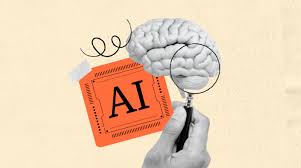The Ultimate Machine: Unveiling the Masterpiece of the Human Body

We inhabit the most complex and astonishing machine known: the human body. This article will take readers on an immersive journey, unraveling the intricate network of systems that operate in perfect, often unseen, harmony to sustain life.
From the microscopic dance of cells to the macroscopic symphony of organs, we'll explore how the body continuously adapts, repairs, and communicates to maintain its delicate balance.
This is a celebration of the sheer marvel and efficiency of human physiology, highlighting its incredible capabilities and resilience, its inherent vulnerabilities, and the constant internal processes that keep us functioning every second of every day.
The Seamless Interplay of Organ Systems
The human body is a masterpiece of integrated systems that work together to perform vital functions.
SOURCE: Google
The circulatory system, for example, is the body's logistical network, a vast highway transporting oxygen and nutrients supplied by the respiratory and digestive systems to every cell, while carrying away waste products.
The respiratory system, with its lungs and airways, doesn't just provide oxygen; it also works with the nervous system to regulate breathing rate in response to the body's needs.
The digestive system, meanwhile, relies on the nervous and endocrine systems to regulate appetite and enzyme release.
All of this is managed in a harmonious loop, a continuous feedback system designed for optimal efficiency.
This seamless interplay is a testament to the body's design. The nervous system acts as the central command center, receiving sensory input and sending out commands, while the musculoskeletal system provides the structure and mobility to execute them.
If the digestive system detects a nutrient deficiency, it can signal the brain, which can then trigger a craving or a physiological change to improve absorption.
The body's major organ systems are not isolated units but are in constant communication, ensuring that all actions, from the beat of a heart to the blinking of an eye, are perfectly coordinated to maintain life.
The American Physiological Society provides extensive research detailing this incredible interdependence.
The Microscopic Dance of Cells and Molecules
At the core of all human function is the fundamental biological process happening at a cellular and molecular level. Every thought, every movement, and every act of healing is underpinned by a complex interplay of cells, proteins, and molecules.
For thought and memory, it's the electrical and chemical signaling between neurons in the brain, a process known as neuro-synaptic transmission.
The brain’s ability to change its structure and function, called neuroplasticity, is the cellular basis for all learning, as detailed in research from the National Institute of Neurological Disorders and Stroke.
At the same time, the fundamental energy for these processes is created in the cell's power plants, the mitochondria, which convert food into adenosine triphosphate (ATP) through a process called cellular respiration.
For movement, the process is a beautiful dance between the nervous system and the muscular system.
When the brain decides to move an arm, it sends an electrical signal down the spinal cord to a muscle, where proteins like actin and myosin slide past each other, causing the muscle to contract, a mechanism widely taught in biology.
SOURCE: Khan Academy
Healing is a different process, often triggered by a wound or injury. A complex cascade of chemical signals activates immune cells and repair proteins, which swarm the site of injury to fight off infection, remove damaged tissue, and begin the process of rebuilding.
These microscopic processes are the building blocks of life itself, as explored in scientific journals like Cell.
Resilience and Self-Repair Mechanisms
The human body is an incredibly resilient machine with sophisticated self-repair mechanisms. For instance, the body's largest organ, the skin, is a master of regeneration, constantly shedding old cells and producing new ones to heal cuts, scrapes, and burns.
The immune system is perhaps the most impressive example of resilience. It is a highly specialized army of cells and proteins that can identify and neutralize a vast array of pathogens, from common viruses to dangerous bacteria.
It even has a "memory," allowing it to recognize and swiftly eliminate threats it has encountered before, a process that forms the basis of vaccination, as explained by the Centers for Disease Control and Prevention.
However, these abilities can be compromised by a range of factors. Chronic inflammation, a state of prolonged immune activation, can damage healthy tissues and contribute to diseases like arthritis and heart disease, as confirmed by research from Johns Hopkins Medicine.
Factors such as poor nutrition, lack of sleep, chronic stress, and exposure to environmental toxins can all degrade the body’s repair capabilities, making it more vulnerable to illness and aging, a topic widely studied by the National Institutes of Health.
This highlights a critical truth: while the body is engineered to heal, its performance is highly dependent on how we treat it.
The Body's Fascinating Adaptations
Our body has an amazing ability to adapt to different environments, stresses, and diseases. When you climb to a high altitude, for instance, your body doesn't just struggle for breath; it initiates a complex process of acclimatization.
Within days, your body begins producing more red blood cells to more efficiently transport oxygen in the thinner air, a process studied by the American Journal of Physiology.
Likewise, exposure to extreme heat or cold triggers a range of physiological responses, from sweating to shivering, to maintain a constant internal temperature, a process known as thermoregulation.
The body's adaptations to disease are equally fascinating. The immune system, for example, is not static; it can be trained.
SOURCE: National Library of Medicine
Exposure to pathogens or a vaccine teaches the immune system to adapt and respond more effectively in the future, as demonstrated in a study by the Vaccine Education Center.
The brain also demonstrates remarkable adaptability. In cases of injury, another part of the brain can sometimes take over the function of the damaged area, a phenomenon that underscores the body's incredible capacity to rewire itself.
This constant adaptation is a core reason for human survival and evolution.
The Communication Network: Hormones and Signals
To ensure all parts of this complex machine work together effectively, the body relies on an intricate communication network.
The nervous system uses lightning-fast electrical signals to send messages. A nerve impulse can travel from your brain to your foot in a fraction of a second, allowing for immediate action.
This network is what allows for instantaneous reactions, whether it's pulling your hand away from a hot surface or maintaining your balance.
Research from the Salk Institute for Biological Studies further details the speed and efficiency of this electrical communication.
In contrast, the endocrine system uses slower-moving chemical messengers called hormones to coordinate long-term processes like growth, metabolism, and mood.
Hormones are released by glands and travel through the bloodstream to their target organs.
For example, when you're under stress,your adrenal glands release cortisol, a hormone that raises blood pressure and blood sugar to provide the energy needed for a "fight or flight" response.
Together, these two systems ensure a seamless, coordinated response to both immediate and long-term needs, making the body a true marvel of integrated communication.
Lessons for Optimal Health
Understanding the body's optimal operation can teach us invaluable lessons about maintaining our health and preventing disease.
The principle of homeostasis, the body's ability to maintain a stable internal environment, is key. To support this, we must provide our body with the right fuel: a balanced diet with essential nutrients.
We also need to understand that the body requires adequate rest for repair and recovery. A lack of sleep, for example, is known to impair immune function and cognitive performance, as evidenced by a study from the National Sleep Foundation.
The body's vulnerabilities also teach us the importance of preventative care. By getting regular check-ups, staying active, and avoiding harmful habits like smoking, we can support the body's natural resilience and reduce the risk of chronic disease.
The CDC provides extensive data on the economic and health benefits of preventative measures. We are the stewards of this ultimate machine.
By listening to its signals and providing it with what it needs to thrive, we can ensure that this masterpiece of biology continues to operate at its peak performance, allowing us to live a long, healthy, and vibrant life.
Recommended Articles
The AI Paradox: Are Smart Tools Making Our Brains Dumber?

As AI becomes indispensable, concerns rise about its long-term impact on human cognition. This article explores if over-...
A New Dawn for Global Mental Health: Innovations Breaking Through the Crisis

Beyond the challenges, this article reveals how technological breakthroughs, destigmatization, and policy shifts are cre...
The Silent Pandemic: Confronting the Global Mental Health Crisis

Mental health challenges are a growing global concern, impacting economies and societies worldwide. This article explore...
The Health Equation: Unpacking Healthcare's Economic Upsides and Downsides

Modern healthcare is a paradox of progress and burden. This article explores how advancements and persistent challenges ...
Navigating the Future of Health: Challenges, Innovations, and the Path to Well-being

From chronic conditions to technological breakthroughs, our understanding and experience of health are rapidly evolving....
You may also like...
Why Do Africans Become More African After Leaving Africa?

Why do Africans abroad suddenly embrace their roots with pride? From Afrobeats in London to Yoruba weddings in New York,...
Boxing Icon's Son in Legal Turmoil: Julio Cesar Chavez Jr. Faces Cartel Allegations & Deportation Drama!

Mexican boxer Julio César Chávez Jr. has been deported from the U.S. to Mexico, where he was immediately jailed for alle...
Super Falcons Make History: Nigeria Crowned WAFCON Champions for 10th Time in Thrilling Win!
)
Nigeria's Super Falcons made history by clinching their 10th Women's Africa Cup of Nations title with a spectacular 3-2 ...
Paolo Sorrentino's 'La Grazia' Dazzles Venice, Earns Raves

Paolo Sorrentino's latest film, 'La Grazia,' captivated the Venice Film Festival, earning a four-minute standing ovation...
KPop Demon Hunters Ignites Oscar Buzz, Captivates Audiences

The animated film "KPop Demon Hunters" has emerged as a record-breaking global phenomenon, topping Netflix viewership ch...
Naira Marley Breaks Silence: Explosive Defense in Mohbad Case Rocks Nigeria!

Naira Marley has released a documentary sharing his side of the story regarding the tragic death of his former signee, M...
Fans Buzzing as Reading & Leeds Festival Teases Major Secret Headliners!

Anticipation is high for the 2025 Reading and Leeds Festivals, with widespread rumors of secret sets from bands like Wol...
Britpop Backlash: Oasis Reunion Fuels Fan Fury, Ticketmaster Under Fire!

Oasis is set to embark on a highly anticipated reunion tour with Andy Bell confirming his involvement, playing 41 dates ...